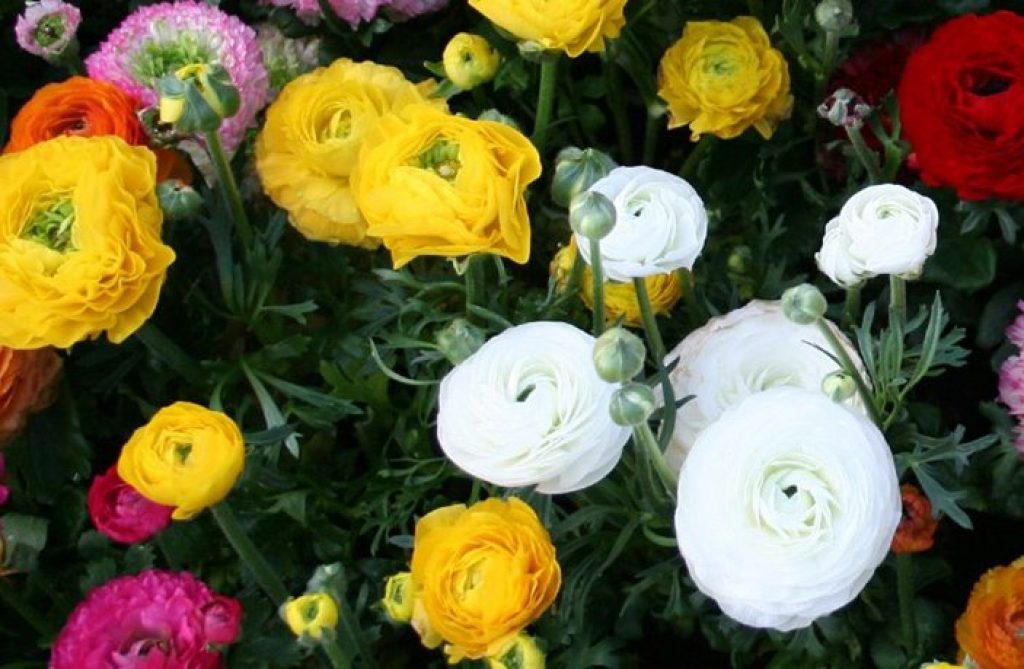With over 500 plant species, genus Ranunculus, commonly known as spearworts, buttercups, or water crowfoots. It is one of the genera in the family Ranunculaceae. The most widespread species is R. repens, a creeping butternut with tenacious and tough roots, while the others are R. bulbosus and R. acris. However, they are regarded as weeds in ornamental gardens.
However, some cultivars and varieties are valued by horticulturalists as ornamental plants, especially those with large brightly colored flowers that may be red, yellow, pink, orange, cream, and purple. They make a perfect garden, cut, and house plants.

Being rabbit and deer resistant (rabbits don’t eat Ranunculus), they are a great garden flower choice. You can grow them with other rabbit-resistant ornamental plants such as wax begonia, snapdragon, pot marigolds, cleome, sweet alyssum, ornamental onions, catmint, yarrow, lavender, and so on if you live in places with lots of cottontails, hares, or wild rabbits.
However, that is not all you need to know. There is more. All parts (leaves, flowers, or buds) of all Ranunculus species are toxic to rabbits since they have ranunculin, broken down to protoanemonin.
Besides rabbits, buttercups are also toxic to livestock. While not their preferred plant either, they may eat this ornamental plant if they are in overgrazed fields. Otherwise, their bitter taste makes the Ranunculus less palatable.
Some of the symptoms of buttercups poisoning to livestock include excessive salvation, bloody diarrhea, and colic, as well as severe oral cavity, gastrointestinal tract, and mucous membrane blistering.
Fortunately, while some hay may contain few buttercups, drying degrades the poisoning, making them safe for your livestock.
Finally, handle these ornamental plants with care since protoanemonin is known to cause contact dermatitis.
More about buttercups
Did you know that despite being toxic, species of Ranunculus have traditional medicine uses as anti-rheumatism, rubefacient, and in treating intermittent fever? Now you know. Also, they are food to some Lepidoptera larvae, such as small-angle shades and Hebrew character
For those interested in planting buttercups, some of the most popular cultivars include R. asiaticus, R. ficaria, R aconitifolius, R. lyallii, R. cortusifolius, as well as Ranunculus Hanoi, Tango, Purple Picotee, Venere, and Amandine Rose.
An important growing tip is knowing that while they can tolerate full sun and shades with bright light, they don’t do well in very warm or excessive heat. For soil, they need light, well-drained soils.
